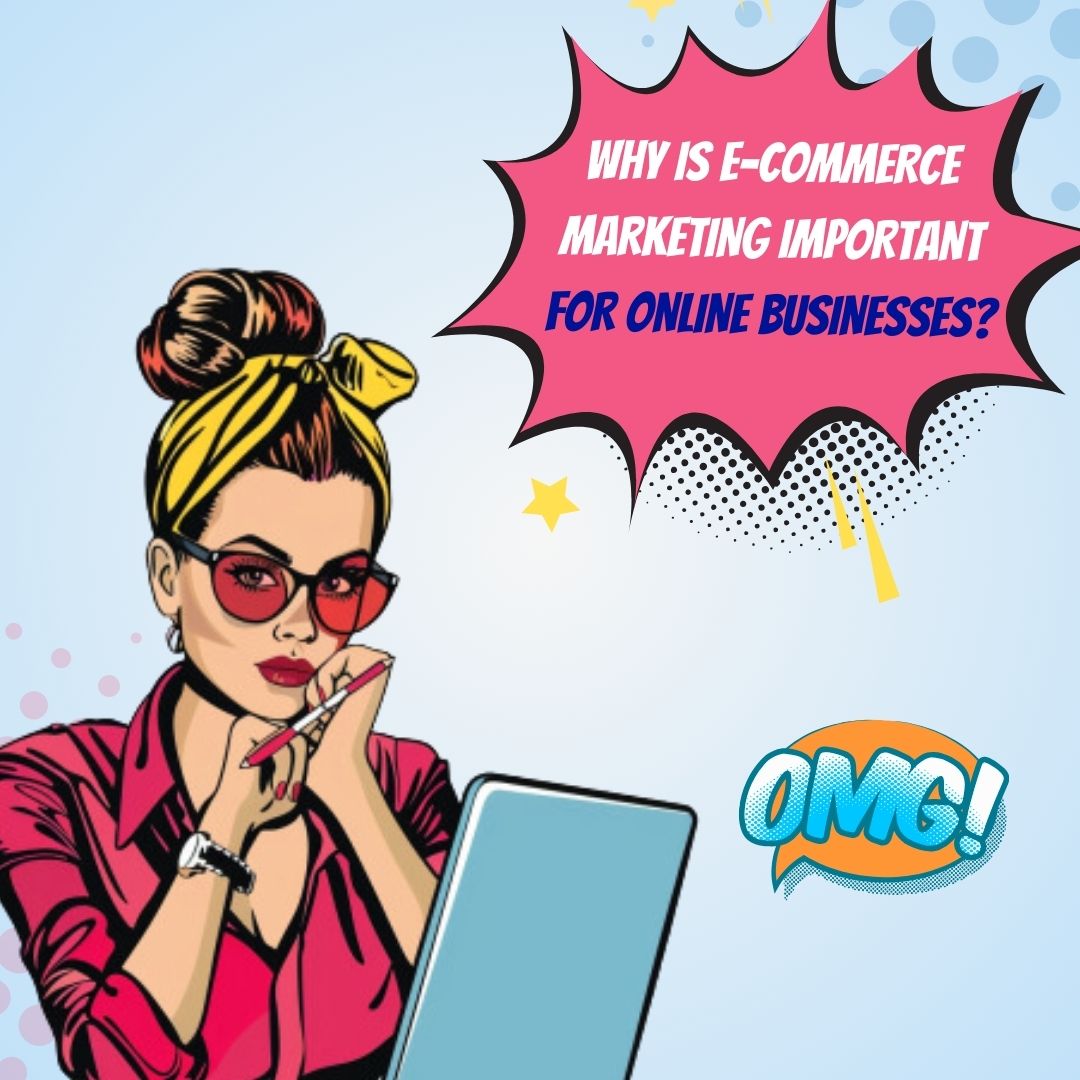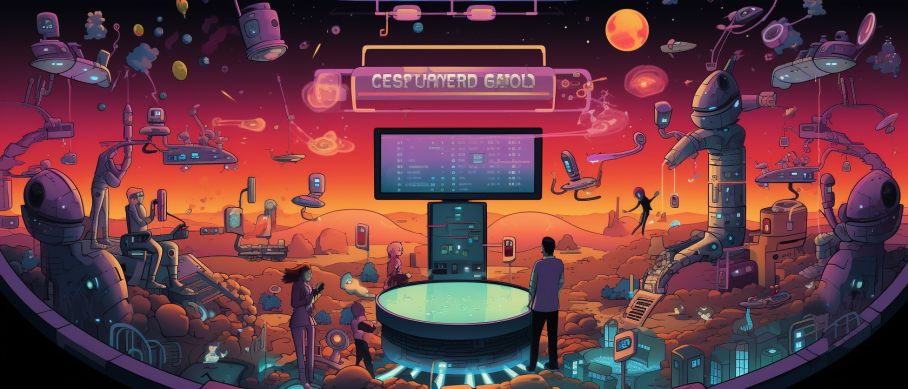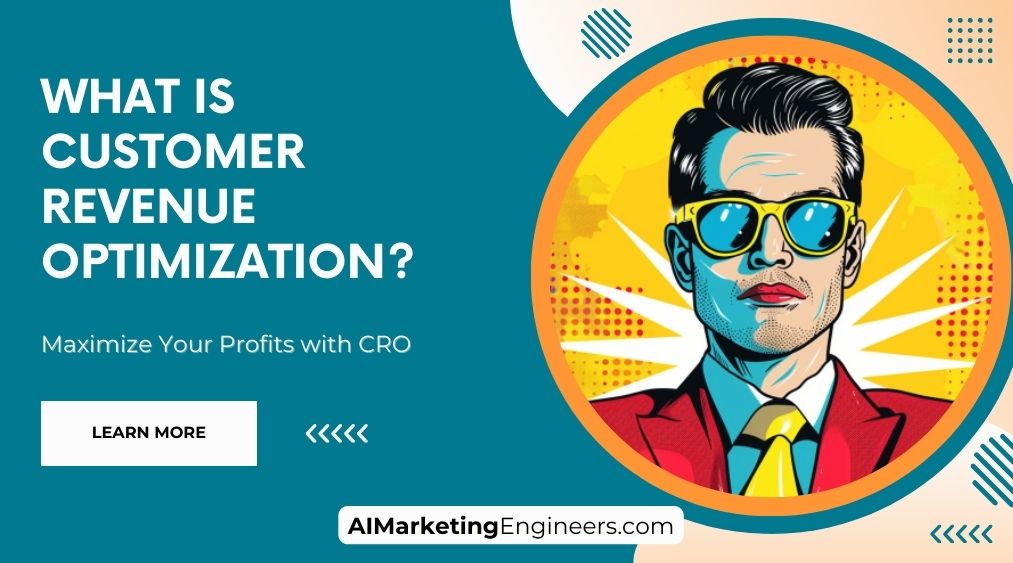Key Takeaways
✅ Understanding Customer Lifetime Value (CLV): Delve into the heart of Customer Revenue Optimization by grasping CLV's crucial role. Did you know that increasing customer retention rates by just 5% can boost profits by 25% to 95%, according to Bain & Company? Actionable recommendation: Dive deep into analytics to segment your customer base and craft personalized campaigns that uplift CLV.
✅ Personalized Experiences Drive Loyalty: Personalized experiences are not just buzzwords—they're business catalysts, with studies showing that 80% of consumers are more likely to make a purchase from a brand that provides tailored experiences. Actionable recommendation: Use advanced personalization tools to revolutionize how you interact with customers, ensuring repeat business and referrals.
✅ Retention and Upselling are Key to CRO: Remember, the probability of selling to an existing customer is 60-70% while to a new prospect it's 5-20%. Actionable recommendation: Develop loyalty programs that resonate with customer values, and leverage behavior-based upselling tactics for existing clientele.

Introduction
Have you ever wondered why some e-commerce ventures experience exponential growth while others plateau? The answer often lies in an elusive yet potent concept: Customer Revenue Optimization (CRO). This powerful approach is about strategically nurturing your customer base to maximize their lifetime value—a true game-changer in the world of commerce.
In this era of data overload, where customers are bombarded with choices, CRO stands as the bastion of personalized, value-driven marketing. By diving into this comprehensive guide, you're not just reading another article - you're stepping into a realm of transformative insights that tap into the potential of every customer interaction. With each paragraph, you'll uncover innovative practices that can turn your analytics into actionable growth strategies, surge your Revenue on Advertising Spend (ROAS), and secure remarkable ROI enhancements.
Get ready to embark on a journey where data meets empathy, where customer satisfaction fuels bottom-line results, and where your business transcends the ordinary. So tease your curiosity, and prepare to be armed with potent, actionable insights that will revolutionize your e-commerce venture.
Top Statistics
| Statistic | Insight |
|---|---|
| Global Customer Experience (CX) Technology Market Growth: Expected to reach $14.8 billion by 2024, at a CAGR of 11.8%. (Forrester, 2020) | This growth reflects the increasing investment in customer experience technologies, demonstrating the significant role of CX in CRO. |
| Customer Experience as Competition: 89% of businesses project to compete primarily on the basis of customer experience in 2021. (Gartner, 2021) | The focus on CX as a competitive differentiator is more prevalent than ever, signaling a strategic pivot for businesses looking to optimize customer revenue. |
| The Importance of Personalized Experiences: 80% of customers consider a company's experience as important as its products or services. (Salesforce, 2020) | Customers' emphasis on experience necessitates tailored engagements, pointing to CRO's critical need for personalization. |
| Global Customer Analytics Market Projection: Expected to grow from $9.5 billion in 2020 to $24.3 billion by 2025, at a CAGR of 19.4%. (MarketsandMarkets, 2020) | This statistic indicates a surging demand for data-driven customer insights that foster strategic decisions in revenue optimization. |
| Impact of CRO and Personalization Investments: A potential revenue increase of 15% and a 50% reduction in acquisition costs. (McKinsey & Company, 2019) | Investing in CRO and personalization is not just a good-to-have but a must-have strategy, leading to considerable revenue growth and efficiency in acquisition spend. |
Customer Revenue Optimization
Customer revenue optimization (CRO) is the methodical approach to maximizing the profit generated from every customer interaction. By focusing on the value each customer brings over the entirety of their relationship with a company, businesses can enhance revenue streams and drive sustainable growth. CRO is essential, forming a cornerstone of today's customer-centric business strategies, ensuring organizations not only attract but more importantly, retain and expand their customer base.
Key Components of Customer Revenue Optimization
The foundation of CRO lies in a deep understanding of target customers. Companies must conduct thorough customer behavior and preference analysis to tailor their offerings. This necessitates a data-driven approach, ensuring that decisions are based on actionable insights. Here, organizations map out customer journeys, extrapolate trends, and segment customers to tailor strategies accordingly, optimizing the revenue generated.
Strategic Approaches to Improve Customer Revenue Optimization
To improve CRO, personalization is key. Brands should adopt personalized marketing and communication strategies, which dramatically enhance customer experience. Simple adjustments, like using a customer’s name, can make communication feel more personal. Besides, focusing on customer retention and loyalty programs drives repeat business, often at a lower cost than acquiring new customers.

Utilize Technology for Effective Customer Revenue Optimization
Effective CRO necessitates leveraging the right technology. CRM systems play an instrumental role in tracking customer interactions and data. Furthermore, automation tools are invaluable for their efficiency in repetitive tasks. Cutting-edge technologies like artificial intelligence and machine learning also offer predictive analytics, which can forecast customer behavior and help in crafting anticipatory strategies.
Measuring Success in Customer Revenue Optimization
Success in CRO can be measured by monitoring KPIs such as customer lifetime value (CLV) and churn rate. These metrics illuminate the health of customer relationships and the effectiveness of CRO strategies. Additionally, it's crucial to assess the ROI from various CRO efforts to ensure resources are being allocated to the most impactful initiatives. A cycle of continuous optimization is vital, with real-time data guiding the refinement of strategies for maximum efficiency and revenue generation.
Best Practices for Sustained Customer Revenue Optimization
For sustained success in CRO, companies must consistently prioritize customer satisfaction and actively seek feedback. Aligning sales and marketing efforts to work synergistically towards enhancing customer value is another critical element. Innovative culture is the engine that drives growth in e-commerce, encouraging new ideas that keep pace with changing consumer trends and industry shifts. Keeping a finger on the pulse of these changes ensures adaptability and relevance in a highly competitive market.
In sum, the pursuit of excellence in Customer Revenue Optimization is a dynamic, ongoing process. It involves honing a company's ability to understand and respond to customer needs while harnessing the power of technology to deliver outstanding service consistently. Implementing these strategies with acuity leads to a robust bottom line and propels long-term business triumph.

Inspirational Quotes
1. "The goal isn't more traffic; it's better traffic. The question isn't how many leads you get; it's how many quality leads you can generate." – Oli Gardner, Co-founder of Unbounce
Oli Gardner brings a laser focus on the essence of Customer Revenue Optimization; it's not about pulling in just any crowd, but rather the right crowd. This approach champions the art of attracting high-intent leads who are not just passing through but are genuinely interested in what your business has to offer. It's a strategic push for quality over quantity, ensuring that each lead has a higher potential for conversion and long-term value.
2. "A brand is no longer what we tell the consumer it is—it is what consumers tell each other it is." – Scott Cook, Founder of Intuit
This insightful nugget from Scott Cook taps into the core of Customer Revenue Optimization by recognizing the power of word-of-mouth in the digital era. It reinforces the concept that a brand's identity and success are co-authored by its customers. In the puzzle of CRO, your customers are not just revenue streams but also collaborators who shape and share your brand's story. The key here is to ensure their experience is worth sharing.
3. "In the world of Internet Customer Experience, speed is becoming increasingly critical. Customers want things fast, and if you don’t provide them quickly, they will go somewhere else." – Nitesh Banga, Senior Vice President & Global Head of Digital Transformation at Wipro
With an unequivocal call for swift action, Nitesh Banga underscores the pivotal role of speed in Customer Revenue Optimization. This era of instant gratification means that your digital touchpoints must operate at peak efficiency to provide that immediate gratification today's customers demand. Banga's statement is a clarion call to e-commerce platforms: prioritize speed in your CRO strategies to retain your customers and keep them content.

AI Marketing Engineers Recommendation
Recommendation 1: Leverage Predictive Analytics for Cross-Selling and Upselling: Harness the power of machine learning and predictive analytics to identify patterns in customer behavior that signify readiness to purchase additional products or services. Data from a 2021 Forrester study shows that predictive analytics can increase cross-sell revenue by up to 20%. Implement tools that analyze purchasing history, browsing patterns, and customer demographics. By doing so, your e-commerce platform can automatically offer personalized product recommendations, increasing the average order value (AOV) and overall customer revenue optimization.
Recommendation 2: Optimize Customer Lifetime Value Through Personalized Experiences: Capitalize on the rise of personalization in digital commerce. According to a Segment report, 71% of consumers feel frustrated when a shopping experience is impersonal. Use data-driven insights to tailor the shopping experience to individual tastes and preferences, fostering brand loyalty. Crafting emails, notifications, and product suggestions based on past interactions can result in a significant uptick in repeat purchases, thereby enhancing the customer revenue optimization strategy.
Recommendation 3: Implement a Customer Data Platform (CDP) for a Unified View: Adapting to a CDP enables e-commerce businesses to have a centralized, comprehensive customer database that synchronizes information across all touchpoints. The unified data can be used to create cohesive and customized marketing campaigns that resonate with the target audience, resulting in increased engagement and sales conversions. With the right CDP, companies have seen up to a 2.5x lift in customer lifetime value, according to a 2020 study from the CDP Institute, thereby substantially contributing to customer revenue optimization.

Conclusion
Customer Revenue Optimization (CRO) is not just a fleeting trend on the e-commerce landscape but a fundamental shift in the way businesses engage with and grow their customer bases. We've journeyed through the essential pillars of CRO, scrutinizing target customer profiles, decoding consumer behavior, and harnessing technology to deepen those pivotal customer relationships. It's clear that a company's propensity to upgrade its growth trajectory lies firmly in the strategic integration of these insights.
The discussion underscores that Personalization, Customer Experience, and Data-Driven Decision Making are the hallmarks of a robust CRO approach. Implementing these with a keen focus on Customer Retention and Loyalty Programs translates into sustained revenue and fosters a competitive edge. Therefore, your takeaway should be this: view every customer interaction as an opportunity to deliver value—an investment into your business's future.
We've also seen that technology such as CRM systems, Automation, and AI is no longer a luxury but a necessity for effective CRO. Leveraging these tools can streamline your operations and anticipate customer needs, putting you a step ahead in the market. Pair this with constant monitoring via KPIs and ROI assessments to ensure that you're not just in the race but are charting the course.
Closing this loop, remember that CRO is a culture as much as it is a strategy. It calls for a commitment to Customer Satisfaction, a willingness to adapt through continuous Innovation, and keeping a finger on the pulse of Industry Trends. The road to enhanced customer value is iterative and evolving. Therefore, step into this with an attitude of experimentation, learning, and resilience.
E-commerce professionals, you possess the tools, insights, and innovations to truly optimize revenue through an unwavering customer focus. Now, let's turn insights into actions. Propel your business towards a horizon where Customer Revenue Optimization is not just understood—it's ingrained, it's influential, and it's incredibly profitable.

FAQs
Question 1: What is Customer Revenue Optimization (CRO)?
Answer: CRO refers to the strategic process of maximizing the value generated from existing customers through data-driven tactics, personalized experiences, and optimized customer journeys. It focuses on increasing customer lifetime value (CLV) by retaining, upselling, cross-selling, and enhancing overall satisfaction.
Question 2: Why is Customer Revenue Optimization important?
Answer: CRO helps companies achieve sustainable growth by optimizing their interactions with current customers. Retaining and engaging existing clients is typically more cost-effective than acquiring new ones. By improving customer experience and satisfaction, businesses can increase loyalty, reduce churn rates, and drive repeat purchases, ultimately boosting profitability.
Question 3: How does Customer Revenue Optimization differ from Conversion Rate Optimization (CRO)?
Answer: While both practices involve optimizing customer behavior, they have distinct objectives: Conversion Rate Optimization primarily targets first-time visitors and focuses on converting them into paying customers, whereas Customer Revenue Optimization concentrates on nurturing relationships with existing customers to enhance retention, loyalty, and long-term value.
Question 4: What are some common techniques used in Customer Revenue Optimization?
Answer: Effective CRO strategies include personalization, segmentation, targeted marketing, loyalty programs, upselling and cross-selling, customer feedback analysis, and continuous improvement through A/B testing and data analysis. These tactics aim to deliver relevant, timely, and valuable experiences that meet customers' evolving needs and preferences.
Question 5: How can businesses measure the success of their Customer Revenue Optimization efforts?
Answer: Key performance indicators (KPIs) for CRO include customer lifetime value (CLV), retention rate, repeat purchase rate, average order value (AOV), net promoter score (NPS), and customer satisfaction score (CSAT). Analyzing these metrics over time can help businesses assess the effectiveness of their CRO strategies and identify areas for improvement.
Question 6: What role does data play in Customer Revenue Optimization?
Answer: Data is the foundation of effective CRO. By collecting, analyzing, and utilizing customer data, businesses can gain insights into their customers' behaviors, preferences, and pain points. This information can then be used to personalize experiences, tailor marketing messages, and optimize customer journeys, ultimately driving higher engagement, loyalty, and revenue.
Question 7: How can businesses implement a successful Customer Revenue Optimization strategy?
Answer: Implementing a successful CRO strategy requires a systematic approach:
a) Identify your target audience and their needs
b) Collect and analyze customer data to gain insights
c) Personalize experiences and tailor marketing messages
d) Continuously test and optimize customer journeys
e) Measure and analyze KPIs to assess performance
f) Incorporate customer feedback to improve satisfaction
g) Foster a customer-centric culture across the organization.

Academic References
- Kumar, V., Shah, D., & Leone, R. P. (2012). Customer Lifetime Value: A Review and Framework for Marketing. Journal of Marketing, 76(6). This article provides a comprehensive review of customer lifetime value (CLV) and its significance in customer revenue optimization. It introduces a framework for managing customer relationships and maximizing CLV.
- Gupta, S. (2004). Maximizing Customer Lifetime Value: A Strategic Framework. Journal of Interactive Marketing, 18(3). This article presents a strategic framework for maximizing customer lifetime value, emphasizing the importance of customer acquisition, retention, and profitability. It discusses how firms can develop effective marketing strategies to optimize customer revenue.
- Petersen, J. A., & Ebbes, P. (2014). Customer Lifetime Value Models: A Review and Evaluation. Journal of Database Marketing & Customer Strategy Management, 21(4). This paper reviews various customer lifetime value models and their applications in customer revenue optimization. It evaluates the strengths and weaknesses of each model and provides guidance on selecting the most appropriate model for different business scenarios.
- Kumar, V., Shah, D., & Leone, R. P. (2010). Customer Revenue Optimization: A Dynamic Programming Approach. Journal of Marketing Research, 47(4). This article introduces a dynamic programming approach to customer revenue optimization, which considers the interplay between customer acquisition, retention, and profitability. It presents a model that helps firms make optimal decisions to maximize customer lifetime value.
- Shah, D., Kumar, V., & Leone, R. P. (2015). Customer Revenue Optimization: A Review and Future Research Directions. Journal of Retailing, 91(4). This paper reviews the literature on customer revenue optimization and discusses the current state of research in this field. It also outlines future research directions for advancing the understanding and practice of customer revenue optimization.
- Kumar, V., Leone, R. P., & Shah, D. (2010). Optimal Customer Retention: A Review and Synthesis. Journal of Retailing, 86(3). This article reviews the literature on customer retention and its role in customer revenue optimization. It synthesizes the key findings and provides a framework for developing effective customer retention strategies.
- Kumar, V., Venkatesan, R., & Reinartz, W. J. (2007). Customer Lifetime Value and Customer-Firm Interaction: A Dynamic Perspective. Journal of Service Research, 10(1). This paper presents a dynamic perspective on customer lifetime value, emphasizing the importance of customer-firm interactions in shaping customer behavior and lifetime value. It discusses how firms can optimize customer revenue by managing customer-firm interactions effectively.







